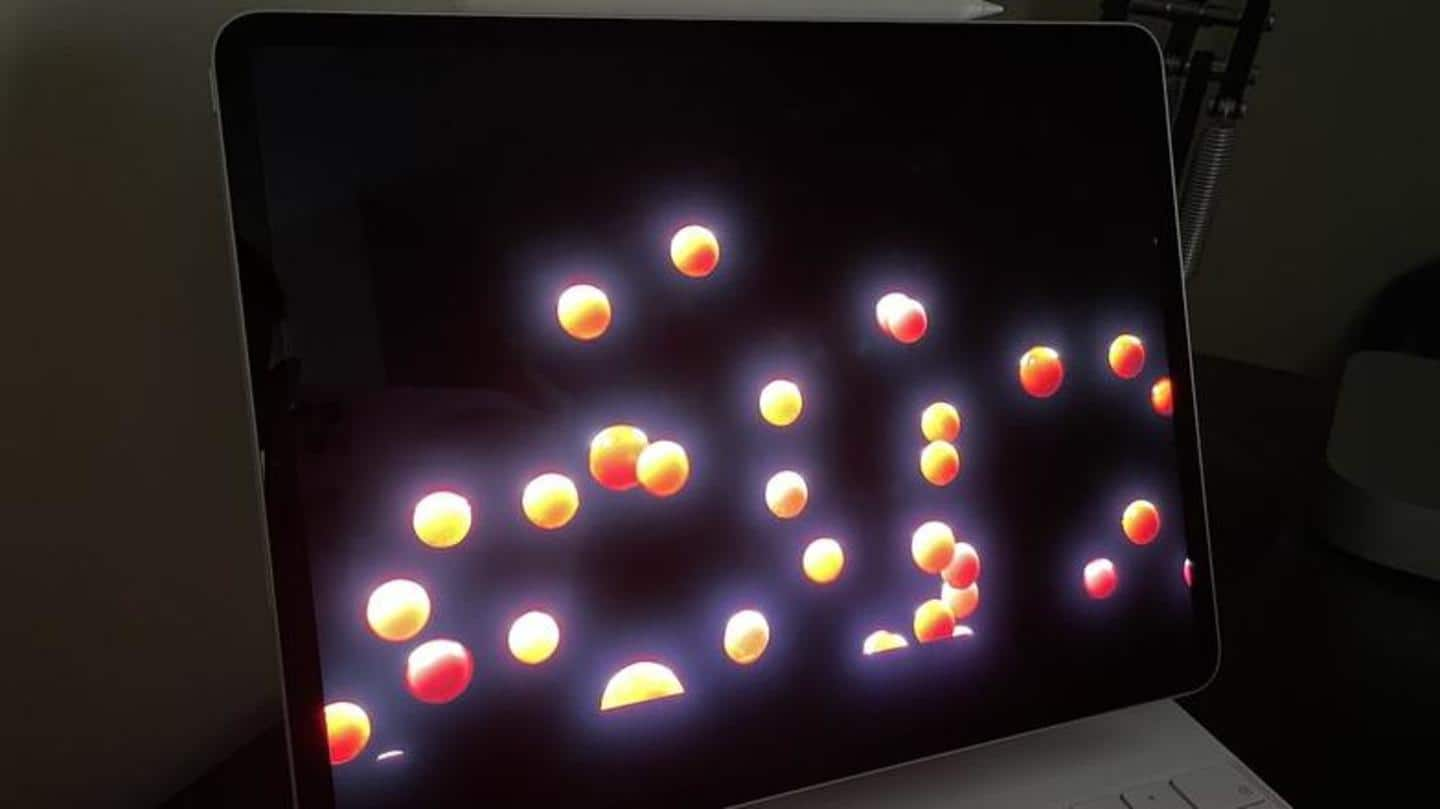
NewsBytes Explainer: What's wrong with Apple iPad Pro's mini-LED display?
What's the story
Last week, the internet blew up with irate iPad Pro owners sharing photographs of egregious blooming artifacts evident in its mini-LED display. This even prompted many to announce cancellations of their pre-orders.
But are these concerns justified, or is this a case of buyer's remorse over a $1,000-worth tablet? Either way, that's an opportunity to unravel mini-LED tech to understand what causes these issues.
Problem
The 2021 iPad Pro doesn't suffer from backlight bleeding
Let's begin by addressing the issue being misdiagnosed as backlight bleed. This is a phenomenon affecting all LCD-based displays, which also includes LEDs and mini-LEDs.
Unlike emissive displays such as OLEDs, Plasmas, and CRTs, where the pixels themselves generate light, individual pixels in LCDs cannot emit light. LCDs rely on the shape-changing liquid crystals to manipulate the backlight in order to produce an image.
Backlight dependency
Here's why LCDs suck at displaying pure black images
To display a black screen, an OLED display can simply switch off all pixels to create purest blacks. LCD derivatives, however, achieve the same by reorienting the liquid crystals within pixels to block the backlight.
However, this isn't perfect and some of the light squeezes through to make the screen appear grey instead of pure black. This is a fundamental design flaw affecting LCDs.
Explanation
What exactly constitutes backlight bleeding in a display?
However, that is not backlight bleed, which is a defect caused by poor backlight design or even due to build quality and fit/finish issues. Backlight bleed usually manifests as bright streaks and/or halos along the edges and corners of displays.
That's the backlight essentially bleeding out onto the visible screen area due to poorly constructed backlight diffusion system and other build quality issues.
Details
Improving LCD performance with full-array local dimming technology
Remember how we learned that LCDs are terrible at rendering pure blacks due to the inability of the pixels to block out the backlight? Well, more expensive LCDs get around this problem with a nifty technique called full-array local dimming (FALD).
Backlights in FALD-equipped LCDs aren't monolithic, but instead comprises several hundred individual LEDs that can be controlled individually.
Not granular enough
FALD technology is great, but still no patch on OLEDs
This allows selective clusters of backlight LEDs (or zones) to be dimmed or even switched off to achieve purer blacks. LCDs equipped with FALD technology have anywhere between several hundred and thousand local-dimming zones.
Unfortunately, dimming LED backlight clusters to improve the effectiveness of individual LCD pixels at rendering pure blacks isn't as granular or accurate as switching off individual OLED pixels.
LED density limitation
Halos and blooming caused by lack of FALD resolution
For perspective, there are 8.3 million pixels in a 4K TV, but the best FALD implementations are capped at around 1,000 backlight LEDs. You don't have to be a mathematician to recognize the monumental disparity here.
This causes FALD-equipped displays to suffer from blooming artifacts while displaying brightly lit objects against dark backgrounds. Meaning, lightsabers can look like glowing sausages due to this effect.
Finer FALD
Smaller sized mini-LEDs significantly improve FALD resolution
Enter mini-LEDs. These are advanced LCDs that use the same underlying technology as the outgoing LED-backlit LCDs. That also means mini-LED displays aren't emissive in nature and still have to rely on the LCD and backlight combination.
However, the individual diodes in mini-LED displays are five times smaller than those used in regular LED-backlit LCD displays, with each diode as small as 200 microns.
Resolution disparity
iPad's 2,500 local-dimming zones aren't enough for 5.6 million pixels
This reduces bloom compared to LCDs sporting traditional FALD implementation. The new mini-LED display-equipped iPad Pro has 2,500 local-dimming zones. Unfortunately, the screen has 5.6 million pixels, so even 2,500 local-dimming zones aren't enough.
If it were an OLED display, it would have, well, 5.6 million local-dimming zones. Hence, it explains why the mini-LED-equipped iPad Pro has blooming issues.
No free lunches
Apple will have to upgrade iPad Pro to OLED display
Because new iPad Pro lacks enough local-dimming zones to wrap around brightly lit on-screen objects against dark backgrounds, this lack of backlight resolution manifests as halos and blooming.
This obviously won't be apparent during daily usage, but watching HDR movies in a dark room will annoy some folk. Then again, one expects nothing but the best when paying a thousand dollars for a tablet.